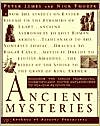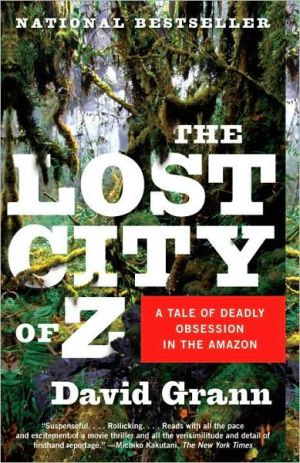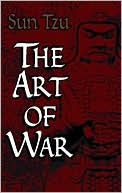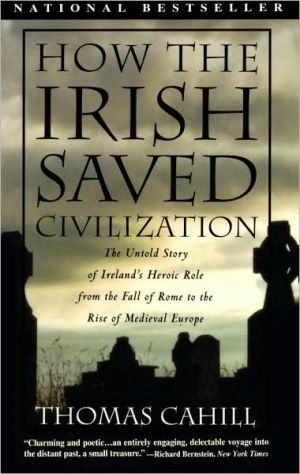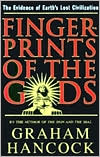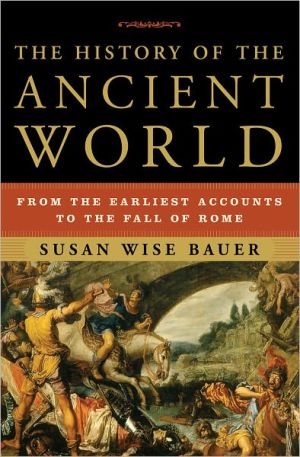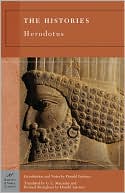Ancient Mysteries
For centuries, philosophers, scientists, and charlatans have attempted to decipher the baffling mysteries of our past, from Stonehenge to the lost continent of Atlantis. Today, however, DNA testing, radiocarbon dating, and other cutting-edge investigative tools, together with a healthy dose of common sense, are guiding us closer to the truth. Now historian Peter James and archaeologist Nick Thorpe tackle these age-old conundrums, presenting the latest information from the scientific...
Search in google:
For centuries, philosophers, scientists, and charlatans have attempted to decipher the baffling mysteries of our past, from Stonehenge to the lost continent of Atlantis. Today, however, DNA testing, radiocarbon dating, and other cutting-edge investigative tools, together with a healthy dose of common sense, are guiding us closer to the truth. Now historian Peter James and archaeologist Nick Thorpe tackle these age-old conundrums, presenting the latest information from the scientific community–and the most startling challenges to traditional explanations of mysteries such as:• The rise and fall of the Maya• A lost cache of Dead Sea Scrolls• The curse of Tutankhamun• The devastation of Sodom and Gomorrah• The Nazca Lines and the Vinland Map• The existence of Robin HoodThese true mystery stories twist and turn like a good whodunit, as James and Thorpe present the evidence for and against the expert theories, shedding new light on humankind’s age-old struggle to make sense of the past. Ancient Mysteries will entertain and enlighten, delight the curious and inform the serious. Archaeology Odyssey - Odyssey Publications Staff Chock-full of fun-facts, helpful maps and diagrams, this lively reference work is an excellent companion volume to Thorpe and James' popular 1994 work on Ancient Inventions
LOST LANDS AND CATASTROPHES\ INTRODUCTION\ On July 16, 1994, a small fragmenting comet known as Shoemaker-Levy began ripping through the atmosphere of the planet Jupiter, causing explosions of almost unimaginable intensity. As the second fragment fell there was a blast equivalent to 250 million tons of TNT—several times more powerful than all the world’s nuclear arsenals put together. When the third chunk of the comet struck it created a hole in Jupiter’s atmosphere the size of the Earth. The full extent of the damage that Shoemaker-Levy inflicted on Jupiter is still being assessed, though one thing is already perfectly clear: the long-cherished scientific belief that comets are harmless and cannot crash into planets has been dispelled forever.\ The question immediately arises—could a comet, or cometary fragment, crash into the Earth? Or has it already done so? In the seventeenth and eighteenth centuries, in the days before Darwin, scientists freely speculated about such matters, wondering whether a comet might have been responsible for the Great Flood described in the Bible. While theologians were happy to accept that the Flood was caused by God directly, scientists were busy researching possible physical mechanisms. Some, including the great Edmond Halley (who gave his name to the famous comet), looked beyond the Earth for a trigger. In 1694 he proposed, in a paper to the Royal Society, that Noah’s Flood was caused by the collision between the Earth and a comet, which landed in the Caspian Sea and drenched the surrounding lands with water. Others speculated that a watery comet was responsible.\ From the standpoint of pre-Darwinian science, belief in a Great Flood was entirely reasonable, as such an event seemed to explain many of the world’s greatest historical enigmas. The rocks that scientists were beginning to examine were full of the fossilized remains of millions of extinct plants and creatures, and a catastrophic flood could account for why these life-forms no longer existed and why their remains had been trapped and preserved in sedimentary rock. It seemed natural, then, to borrow an explanation from the Bible, which told of the deluge in the time of Noah. Assuming that there had been a real Flood also provided an economical explanation for why there are so many similar legends around the world.\ Such quaint ideas went completely out of fashion in the early nineteenth century. The relatively new science of geology was maturing, and the naive view that all the world’s rock strata had been laid down in a single event was seen to be unworkable. It was becoming clear that there was a whole sequence of layers from different ages, laid one upon the other, each containing its own life-forms. The question now was what had created these strata and how long they took to form. One school of geology was the catastrophists, who expanded the idea of a Great Flood into a whole series of cataclysms—sometimes of water, sometimes of fire (from volcanic activity). Their opponents represented a new school of thought—the uniformitarians. Founded in the 1830s by lawyer Charles Lyell, they set new ground rules for the debate. Geologists generally agreed that special causes—such as direct divine intervention—should be excluded from scientific discussion, and Lyell now introduced his principles of “uniformity,” which attempted to rule out special events as well.\ The law of uniformity states that the “present is the key to the past”: only the same forces that are visible today were responsible for shaping the world. On a general level this makes perfect sense. There is no point assuming that the laws of physics were once different and, for example, that gravity had no effect a million years ago. On the other hand, Lyell and his followers excluded the possibility of anything happening in the past that is not observable now: there were no great deluges, global conflagrations, impacts by comets, or other major catastrophes for the simple reason that such things do not happen today. (Had they witnessed something like the Shoemaker-Levy event, they might have thought very differently about comets.) Instead, the uniformitarians argued, the Earth’s strata had been laid down gradually over millions of years.\ It was easy for Lyell and his followers to characterize catastrophism as smacking of old-time religion, and to present themselves as progressive and scientific. Catastrophist geologists—most of whom were just as secular in outlook as their opponents—were forced into retreat, and the triumph of Charles Darwin sealed their fate. When Darwin published his controversial Origin of Species in 1859, he chose to fit his theory of evolution into a uniformitarian, gradualist mold. Evolution as such does not require a gradual path—in fact, the fossil record suggests that all major changes have been very rapid. Yet Darwin, despite his own observations in South America of the sudden and catastrophic demise of its prehistoric fauna, elected for gradualism. Part of the reason must have been to be on the “winning side.” The other was that the uniformitarians, like Darwin, inevitably challenged the literal truth of the Bible.\ By this stage, catastrophism, antievolutionism, and biblical fundamentalism had become nicely muddled—at least in the minds of Darwinians. When Darwinism won the debate, catastrophism was thought to have been debunked, along with the stories of Adam and Eve and Noah’s Flood. Here there was another force at work besides the desire to develop a rationalist view of the Earth’s history free from biblical influence. This was the straightforward desire—shared by scientists with the rest of us—to view the Earth as a safe place to live. This desire was the root cause of a fierce and protracted philosophical debate that had been raging for over two thousand years. On the one side was Plato, who used the evidence of myth and legend (as well as his own gleanings from geology and archaeology) to argue that the Earth had been subject to periodic catastrophes brought about by causes outside our world. On the other side was his pupil Aristotle, who insisted that as the heavens were made of perfect matter they could present no dangers to the Earth.\ Aristotle’s cozy worldview had been steadily eroded since the Middle Ages, but in the eighteenth century it managed to sneak back into scientific thinking through the work of Sir Isaac Newton. His hidden agenda was to restore an Aristotelian worldview, in which the world was protected from catastrophe by Divine Providence. In 1708, when his star pupil, mathematician William Whiston, published a book arguing that a comet had caused Noah’s Flood, Newton turned on him and started a campaign to wreck his career.\ Newton, Lyell and Darwin made a formidable combination. From the late nineteenth century onward, catastrophist theories were sidelined, at least in Britain, then the leader of the world’s scientific trends.\ Matters were not helped by the stream of books on lost lands and catastrophes that began to pour from the pens of writers on the wilder fringe of archaeology. The idea of a lost continent in the Atlantic, first written about by Plato, became a favorite topic, particularly among those who claimed they had psychic sources of information about the supercivilization of “Atlantis” (see Edgar Cayce on Atlantis in Archaeology and the Supernatural). Not content with one lost continent, some of these writers invented a partner for Atlantis called Mu or Lemuria, which began its literary career in the Indian Ocean but later expanded into the Pacific. Despite numerous claims to the contrary, absolutely nothing about it is based in genuine myth or legend.\ The name Mu comes from that of “Queen Moo” of Atlantis, which Augustus le Plongeon (1826–1908), an eccentric pioneer of Central American archaeology, mistakenly believed he could read in the texts of the ancient Maya of Central America. (According to le Plongeon, the Maya came from Atlantis.) The alternative name Lemuria came about in the late nineteenth century when the great German naturalist Ernst Haeckel suggested that a land-bridge stretching across the Indian Ocean from Madagascar to India might explain the widespread distribution of the small tree-dwelling mammals called lemurs. An English naturalist, Philip Sclater, soon afterward coined the name “Lemuria.” There was never any solid evidence for such a land-bridge—an idea that became redundant after the discovery of continental drift—yet this did not stop occult theorists from developing Lemuria into the “real” homeland of the human race.\ Lemuria was taken to its greatest heights in the writings of Madame Helena Blavatsky, the eccentric Russian émigré who founded the Theosophical Society in London in 1875. Theosophy blended the teachings of Christianity and Buddhism with mystical revelations that Blavatsky claimed to have received personally from “Secret Masters,” mysterious guardians of an ancient tradition who lived in hidden cities in Tibet. The Masters revealed to her the true history of the Earth, including a succession of strange “races” that had inhabited the world before our own species emerged. The Third Race, which had lived on Lemuria, were egg-laying hermaphrodites, sometimes with four arms and an eye in the back of their heads. According to some Theosophist writers, these Lemurians evolved into a Fourth Race, strapping giants up to 15 feet tall who led around pet dinosaurs on leashes. Lemuria/Mu, like Atlantis, was thought to have been destroyed by earthquakes and sunk beneath the waves.\ With enthusiasts like the occultists, catastrophism had little need for enemies. By the middle of this century the idea of past global upheavals was treated by scientists with abhorrence. It was extremely unfortunate timing for Immanuel Velikovsky, who produced an extreme catastrophist model for solar system history in 1950 (see The Day the Sun Stood Still? in Watching the Skies).\ Yet catastrophism is now making a serious comeback—because of the sheer weight of hard evidence in its favor. The geological evidence is, in fact, perfectly clear: all the great epochs in Earth’s history ended with the complete extermination of vast numbers of life-forms. During the 1960s a trickle, then a steady stream, of scientific studies began to appear correlating the great extinctions with other upheavals of nature—including massive changes in climate, dramatic fluctuations in sea level, peaks of volcanic activity, and even reversals of the Earth’s magnetic field. Far from being quiet, it now seems that Earth’s history has been shaped by massive catastrophes, sometimes of global proportions. Of course gradual processes—of the kind we see today—have always played their part. The uniformitarians were right to stress these, but utterly wrong in excluding catastrophes. As put by Derek Ager, Professor of Geology at the University of Bristol, En- gland, and a pioneer in the renaissance of catastrophist thinking, “the history of any one part of the earth, like the life of a soldier, consists of long periods of boredom and short periods of terror.”\ So what was behind the great upheavals that had punctuated the Earth’s history? In some cases, such as the massive catastrophe that ended the Cretaceous period and wiped out the dinosaurs, some 65 million years ago, the answer is quite clear. It is now beyond reasonable doubt that at the end of the Cretaceous the world was struck with devastating effect by an asteroid.
AcknowledgmentsAuthor's NoteIntroductionCh. 1Lost Lands and Catastrophes1Atlantis - Lost and Found?16Sodom and Gomorrah41Poleshift58The Rise and Fall of Maya Civilization76Ch. 2Watching the Skies99Megalithic Astronomers114The Orion Mystery128The Day the Sun Stood Still?135The Star of Bethlehem153Ch. 3Architectural Wonders167Stonehenge184How were the Pyramids Built?201The Riddle of the Sphinx213Tiahuanaco231The Mystery of Easter Island244Ch. 4Earth Patterns267The Glastonbury Spiral284The Somerset Zodiac298Ley Lines304The Nazca Lines322Ch. 5Voyagers and Discoveries337The First Americans350Phoenicians Around Africa368The Lost Roman Army375The Vikings in America382The Welsh Indians401Ch. 6Legendary History413Theseus and the Minotaur426The Elusive Amazons432King Arthur446Robin Hood463Dracula476Ch. 7Hoax?487The Man from the ICE504Schliemann's Treasure510The First Dead Sea Scrolls?523King Arthur's Grave527The Vinland Map538Ch. 8Archaeology and the Super Natural551The Curse of Tutankhamun569The Case of Omm Seti584Edgar Cayce on Atlantis598The Company of Avalon604Sources623Bibliography641Index643Picture Credits653
\ Odyssey Publications StaffChock-full of fun-facts, helpful maps and diagrams, this lively reference work is an excellent companion volume to Thorpe and James' popular 1994 work on Ancient Inventions \ — Archaeology Odyssey\ \ \ \ \ Kirkus ReviewsA thoughtful and absorbing analysis of more than 30 of the most intriguing artifacts, occurrences, and myths of the prehistoric, ancient, and medieval worlds, by freelancer James and archaeologist Thorpe (King Alfred's College, UK). Conundrums like the mythical lost continent of Atlantis, the legend of King Arthur, the Easter Island statues, and the curse of Tutankhamen have been overworked in recent years by cultists and speculative writers, who have often, without the benefit of critical scholarship and analysis, propounded outlandish and even bizarre theories. Too often, debunkers have responded simply by dismissing such theories rather than by inquiring more closely into the mysteries themselves. Marshaling the most current evidence in each case, the authors here endeavor "to chart a middle course between the uncritical enthusiasts and the professional skeptics." James and Thorpe explore lost civilizations and the catastrophes that destroyed them, astronomical phenomena, architectural wonders, ancient reworkings of the landscape, voyages and discoveries, ancient myths and legends, hoaxes, and supernatural occurrences. Some myths, like that of the lost continent of Atlantis or that of the Christian African king "Prester John," turn out to have been precisely that—either gross embellishments of real events or total fabrications. Others, like the Star of Bethlehem (the authors conclude that the Star may have actually been Halley's comet in 12–11 B.C.), King Arthur (possibly a historical Dark Ages warlord named Riothamus), and Robin Hood (among other theories, a servant of Edward II), appear to have some arguable historical basis. Among other enigmas, the authors plumb Stonehenge(a neolithic sun temple, not built by the Druids), the legend of Dracula, a lost Roman army that may have found its way to China, a Viking rune-stone in Minnesota (a likely hoax), and an ancient visit by a Welsh prince to America (just possibly true) An engrossing journey through the riddles of the distant past. (Book-of-the-Month Club selection, Quality Paperback Book Club selection.)\ \
